You can add the Hidden Items command to the context menu to toggle the visibility of hidden files in File Explorer. The command will be available in a folder's context menu and in the context menu of the folder background (the white area). Here is how you can do this.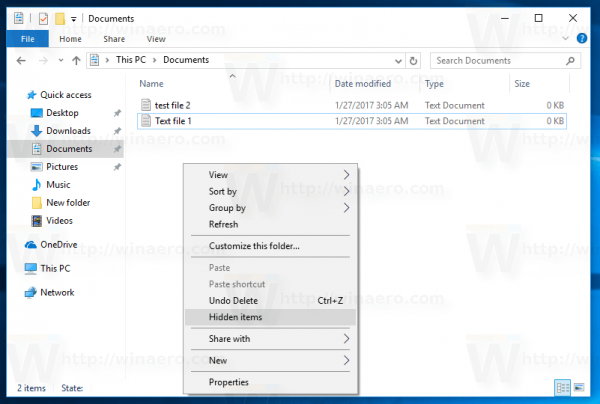 The Hidden Items command can be added to a folder's context menu in File Explorer with a simple Registry tweak. Once you apply the tweak, you won't need to use the Ribbon or the Folder Options dialog to hide or show files. Instead, you can toggle the visibility of hidden files directly from the context menu.
The Hidden Items command can be added to a folder's context menu in File Explorer with a simple Registry tweak. Once you apply the tweak, you won't need to use the Ribbon or the Folder Options dialog to hide or show files. Instead, you can toggle the visibility of hidden files directly from the context menu.
To add Toggle Hidden Items Context Menu in Windows 10, do the following.
Apply the Registry tweak listed below. Paste its contents inside Notepad and save as a *.reg file.
Advertisеment
Windows Registry Editor Version 5.00
[HKEY_CLASSES_ROOT\Folder\shell\Windows.ShowHiddenFiles]
"CommandStateSync"=""
"Description"="@shell32.dll,-37573"
"ExplorerCommandHandler"="{f7300245-1f4b-41ba-8948-6fd392064494}"
"MUIVerb"="@shell32.dll,-37572"
[HKEY_CLASSES_ROOT\Directory\Background\shell\Windows.ShowHiddenFiles]
"CommandStateSync"=""
"Description"="@shell32.dll,-37573"
"ExplorerCommandHandler"="{f7300245-1f4b-41ba-8948-6fd392064494}"
"MUIVerb"="@shell32.dll,-37572"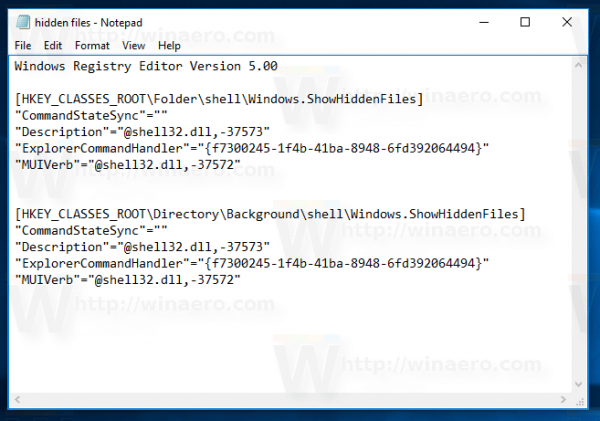 In Notepad, press Ctrl + S or execute the File - Save item in the File menu. This will open the Save dialog. There, type or copy-paste the name "hidden files.reg" including quotes. Double quotes are important to ensure that the file will get the "*.reg" extension and not *.reg.txt. You can save the file to any desired location, for example, you can put it in your Desktop folder.
In Notepad, press Ctrl + S or execute the File - Save item in the File menu. This will open the Save dialog. There, type or copy-paste the name "hidden files.reg" including quotes. Double quotes are important to ensure that the file will get the "*.reg" extension and not *.reg.txt. You can save the file to any desired location, for example, you can put it in your Desktop folder.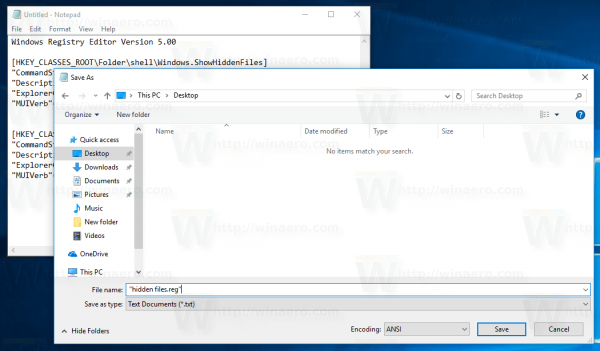
Double click the file you created, confirm the import operation and you are done!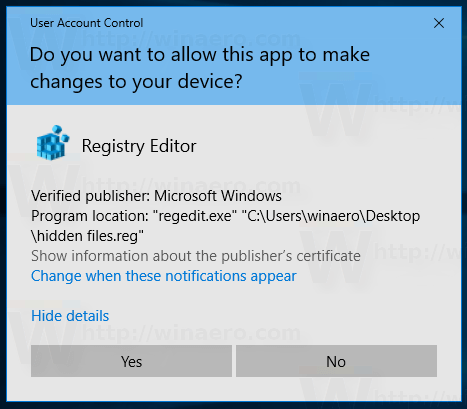
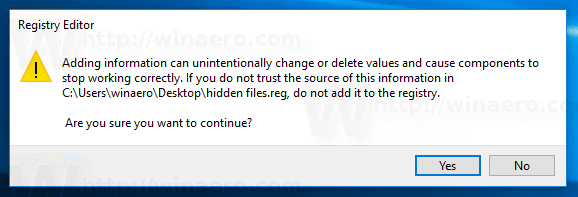
Now, you can right-click in the empty white space in any folder and select Hidden Files to toggle their visibility.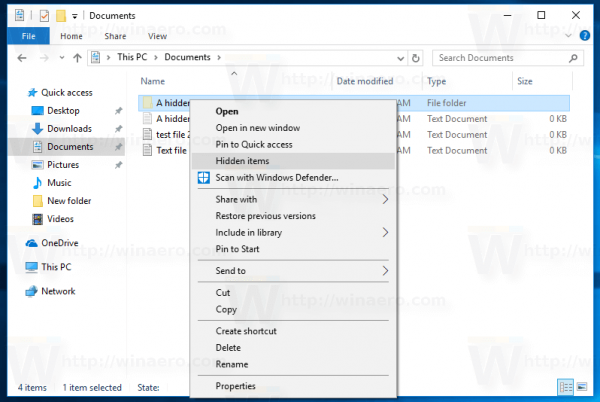
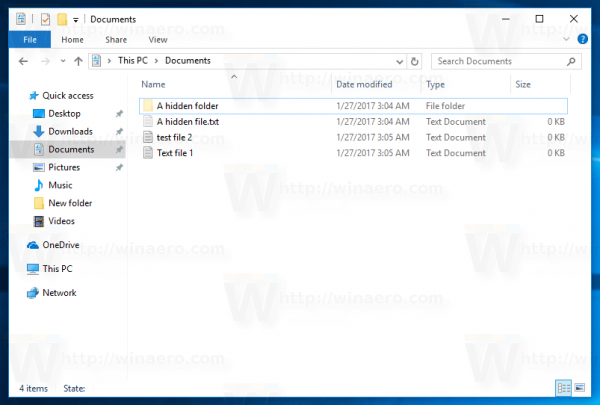
To understand how this tweak works, refer to my previous article where I explained how to add any Ribbon command to the Context menu in Windows 10. See
How to add any Ribbon command to the right click menu in Windows 10
In short, all the Ribbon commands are stored under this Registry key
HKEY_LOCAL_MACHINE\SOFTWARE\Microsoft\Windows\CurrentVersion\Explorer\CommandStore\shell
You can export the desired command and modify the exported *.Reg in order to add it to the context menu of files, folders, or any other object visible in File Explorer.
To save your time, I made ready-to-use Registry files. You can download them here:
Alternatively, you can use Context Menu Tuner. It will allow you to add any Ribbon command to the context menu.
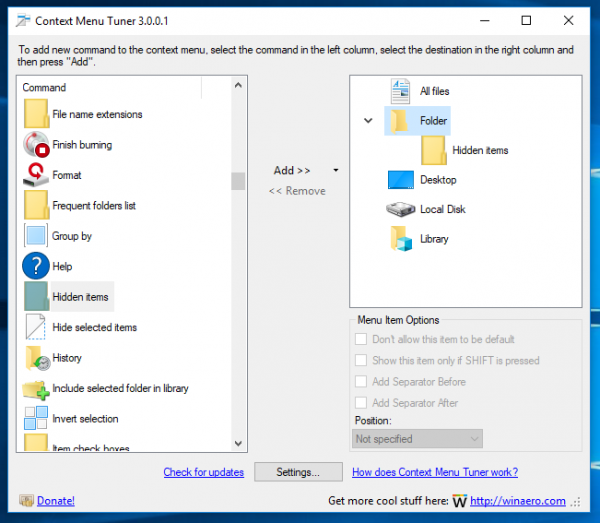 Select "Hidden Items" in the list of available commands, select "Folder" on the right side and click the "Add" button. See the screenshot above. You can get the app here:
Select "Hidden Items" in the list of available commands, select "Folder" on the right side and click the "Add" button. See the screenshot above. You can get the app here:
You can also add the useful Hide Selected Items command to the context menu in Windows 10.
That's it.
Support us
Winaero greatly relies on your support. You can help the site keep bringing you interesting and useful content and software by using these options:

What about the hidden system files?